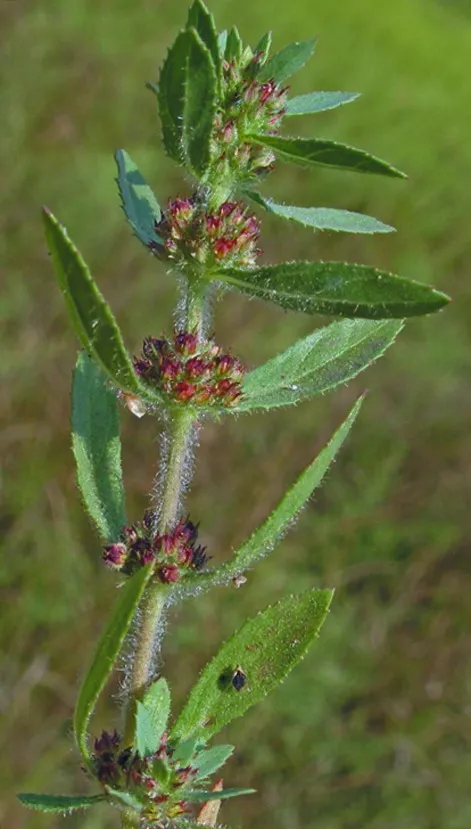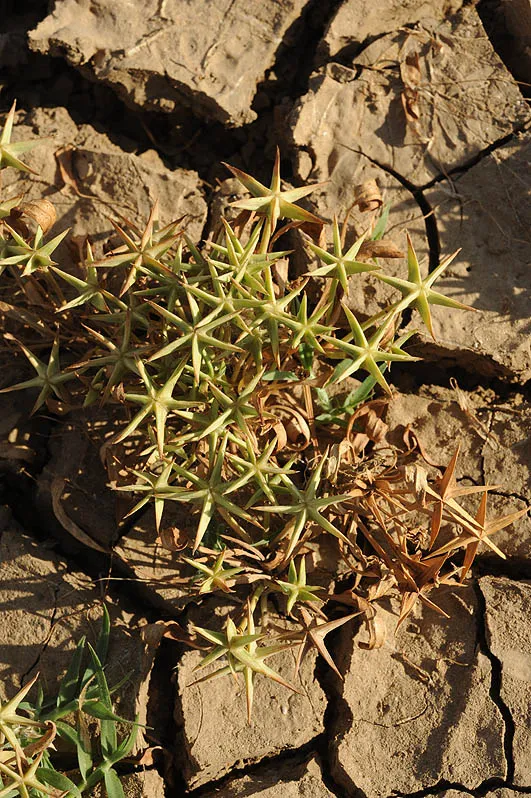Bergia ammannioides

Bergia ammanioides is known from a single site in the Sharon region: it was first collected in 1962 from the Dora pond in southern Netanya. During the 1992 rare species survey, 25 individuals were counted in an area of 10 square meters. The plants grew at the edge of the Dora pond in a small clearing inside clumps of Paspalum distichum (Shir Vered). Recently (2006), it was identified with certainty in the Dora pond and it was reported from the Herzliya winter pool known as the Bassa (Oz Golan).
Winter pools and at the edge of swamps on sandy soil on the coastal region.
The genus Bergia includes 24 species, whose main distribution is in the Paleotropic region: Asia, Africa, and Australia (ten species!). Bergia ammanioides is of tropical origin and the farther south we go from Israel the number of Bergia species increases: two in Egypt and three in southern Arabia. The species represents a biogeographic group of plants characteristic of moist habitats of tropical origin. Israel's coastal plain is at the northernmost extreme of its distribution in the Middle East and the Mediterranean region (additional examples of such distribution include Cyperus papyrus, C. corymbosus, Scirpus cernuus and Nymphaea caerulea).
• Bergia ammanioides grows only at a single site in Israel, which is now surrounded by a large neighborhood south of Netanya. The entire drainage system of the site has changed, which is severely affecting the habitat in which Bergia once grew. The site is open to all, and is used as a park by the residents in the surrounding areas, as well as a "toilet" for pets. As mentioned above it has also been recently found in the Herzliya Bassa.
• The number of individuals is estimated at several dozen.
• Efforts should be invested to have the Dora pond and its surroundings declared a nature reserve.
• Agricultural and urban development of the coastal plain threatens B. ammanioides and all species belonging to the unique biographic group of aquatic plants, for which Israel is the northern limit of their global range. Thus, the species is important on a regional and global scale, not just on a local scale. Apart from Israel's coastal plain there is no other similar habitat on the eastern Mediterranean coast , that is suitable for this biogeographic-ecological group; south of this region the Israeli Mediterranean coast is desert, while to the north, the Lebanese and Syrian coasts are rocky, and lack a broad flat coastal strip. On the Turkish coast, the climate is not sub-tropical.
Bi-weekly surveys should be conducted in the summer months, from May to September, to detect and monitor the Bergia populations in the Dora pond. As an annual plant that grows in the area for at least 30 years it has probably preserved its soil seed bank to this day. The conditions in which Bergia’s population grow in neighboring countries (Alexandria, Egypt) should be studied and the Dora pond habitat should be rehabilitated.
Bergia ammanioides has a very broad range, which includes the Mediterranean Basin, the Irano-Turanian region and penetrations into the Paleotropical region. In the Middle East B. ammanioides grows along the Egyptian coast, lower Iraq, in Arabia (?) and northwestern Iran (?).
Bergia ammanioides is an annual plant of drying winter ponds, which until 1992 was found in Israel at a single site – the Dora pond in southern Netanya, and was not seen again until it was rediscovered in 2006.
The species is a typical example of the problematic nature of declaring a very rare species, found at only one site, and whose population is not stable, a red plant. Its appearance in the Dora Pond could be episodic, and if so, it should not be added to the red list or prioritized for conservation. But if this population is a natural and stable one that maintains itself demographically, then B. ammanioides receives the highest value in nature conservation “critically endangered” because only a single site remains in Israel. B. ammanioides is a southern peripheral (not found in Lebanon, Syria or Turkey), and its surrounding habitat is highly threatened by construction, as well as suffering from an unstable water regime which could dry up.
Current Occupancy Map
| 1000 squre meter pixel | 5000 squre meter pixel | 10000 squre meter pixel | |
|---|---|---|---|
| number of observations | 0 | 0 | 0 |
| in total pixels | 0 | 0 | 0 |
| Family | Elatinaceae |
| Classification | On the endangered species list |
| Ecosystem | Coastal area |
| Chorotype | Mediterranean and Irano – Turanian |
| Conservation Site | Dora Pond |
| Rarity |
1
6
6
|
|---|---|
| Vulnerability |
0
4
4
|
| Attractiveness |
0
0
4
|
| Endemism |
0
0
4
|
| Red number |
1
5.8
10
|
| Peripherality | 0 |
| IUCN category | DD EW EX LC CR EN VU NT |
| Threat Definition according to the red book | Critically endangered |
 Based on:
Based on:






